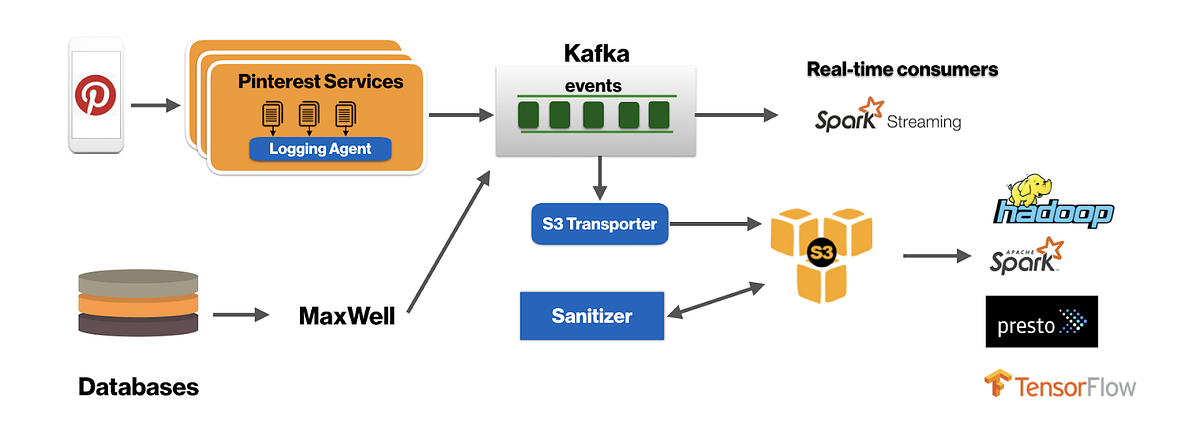Goal of this project is to create AMI, Vagrant Box and Docker base images that one could use to deploy Cassandra.
The docker image is hosted on docker hub (see DockerHub). The vagrant box is hosted on Atlas see (Atlas). The source code is hosted on GitHub (see GitHub).
Key features of image, AMI, Vagrant box
- Uses JBOD instead of RAID (not done)
- Uses ergonomics to configure Cassandra based on deployment environment (preliminary work done)
- Sets up security if requested (not done)
- Sets up TLS/SSL if requested (not done)
- Sets up HD encryption if requested (not done, or use encrypted EBS instances)
- Sets up users (not done)
- Installs Cassandra as a systemd service (not done)
- Allows cloud deploy (not done)
- Monitoring (CloudWatch, InfluxDB) (not done)
- Log aggregation (CloudWatch, ELK) (not done)
- Installs JEMalloc and configures Cassandra to use off heap no JVM (done)
- Install JNA (done)
- Configures OS (Linux) to be performant (done)
Create a vagrant box
git clone https://github.com/cloudurable/cassandra-image.git cd cassandra-image vagrant up # Connect to vagrant box cqlsh localhost 19042
Connect to vagrant image
vagrant ssh
Create a docker image
git clone https://github.com/cloudurable/cassandra-image.git cd cassandra-image bin/start-image.sh # Connect to docker image cqlsh localhost 29042
Provisioning
We use packer and vagrant to create images.
Running setup scripts
## cd ~; mkdir github; cd github; git clone https://github.com/cloudurable/cassandra-image $ cd ~/github/cassandra-image $ pwd ~/github/cassandra-image ## Setup keys $ bin/setupkeys-cassandra-security.sh ## Download binaries $ bin/prepare_binaries.sh ## Bring Vagrant cluster up $ vagrant up
Working with ansible from bastion
$ vagrant ssh bastionFirst setup ssh-agent and add keys to it.
Start ssh-agent and add keys
$ ssh-agent bash $ ssh-add ~/.ssh/test_rsa
Ansible Ping server
$ ansible node0 -m pingOutput
node0 | SUCCESS => {
"changed": false,
"ping": "pong"
}
Ansible Ping servers
$ ansible nodes -m pingOutput
node0 | SUCCESS => {
"changed": false,
"ping": "pong"
}
node2 | SUCCESS => {
"changed": false,
"ping": "pong"
}
node1 | SUCCESS => {
"changed": false,
"ping": "pong"
}
Setting up my MacOSX to run Ansible against instances
Move to the where you checked out the project.
cd ~/github/cassandra-imageAdd bastion, node0, etc. to /etc/hosts
$ cat /etc/hosts
### Used for ansible/ vagrant
192.168.50.20 bastion
192.168.50.4 node0
192.168.50.5 node1
192.168.50.6 node2
192.168.50.7 node3
192.168.50.8 node4
192.168.50.9 node5
Add keys to known_hosts to avoid prompts
$ ssh-keyscan node0 node1 node2 >> ~/.ssh/known_hosts
Start ssh-agent and add keys
$ ssh-agent bash $ ssh-add ~/.ssh/test_rsa
Notice the ansible.cfg file and inventory.ini file in the project dir
$ cd ~/github/cassandra-image $ cat ansible.cfg [defaults] hostfile = inventory.ini cat inventory.ini [nodes] node0 ansible_user=vagrant node1 ansible_user=vagrant node2 ansible_user=vagrant
Ansible will use these.
Ansible Ping server
$ ansible node0 -m pingOutput
node0 | SUCCESS => {
"changed": false,
"ping": "pong"
}
Ansible Ping servers
$ ansible nodes -m pingOutput
node0 | SUCCESS => {
"changed": false,
"ping": "pong"
}
node2 | SUCCESS => {
"changed": false,
"ping": "pong"
}
node1 | SUCCESS => {
"changed": false,
"ping": "pong"
}
More details to follow
About us
Cloudurable provides AMIs, cloudformation templates and monitoring tools to support Cassandra in production running in EC2. We also teach advanced Cassandra courses which teaches how one could develop, support and deploy Cassandra to production in AWS EC2.







